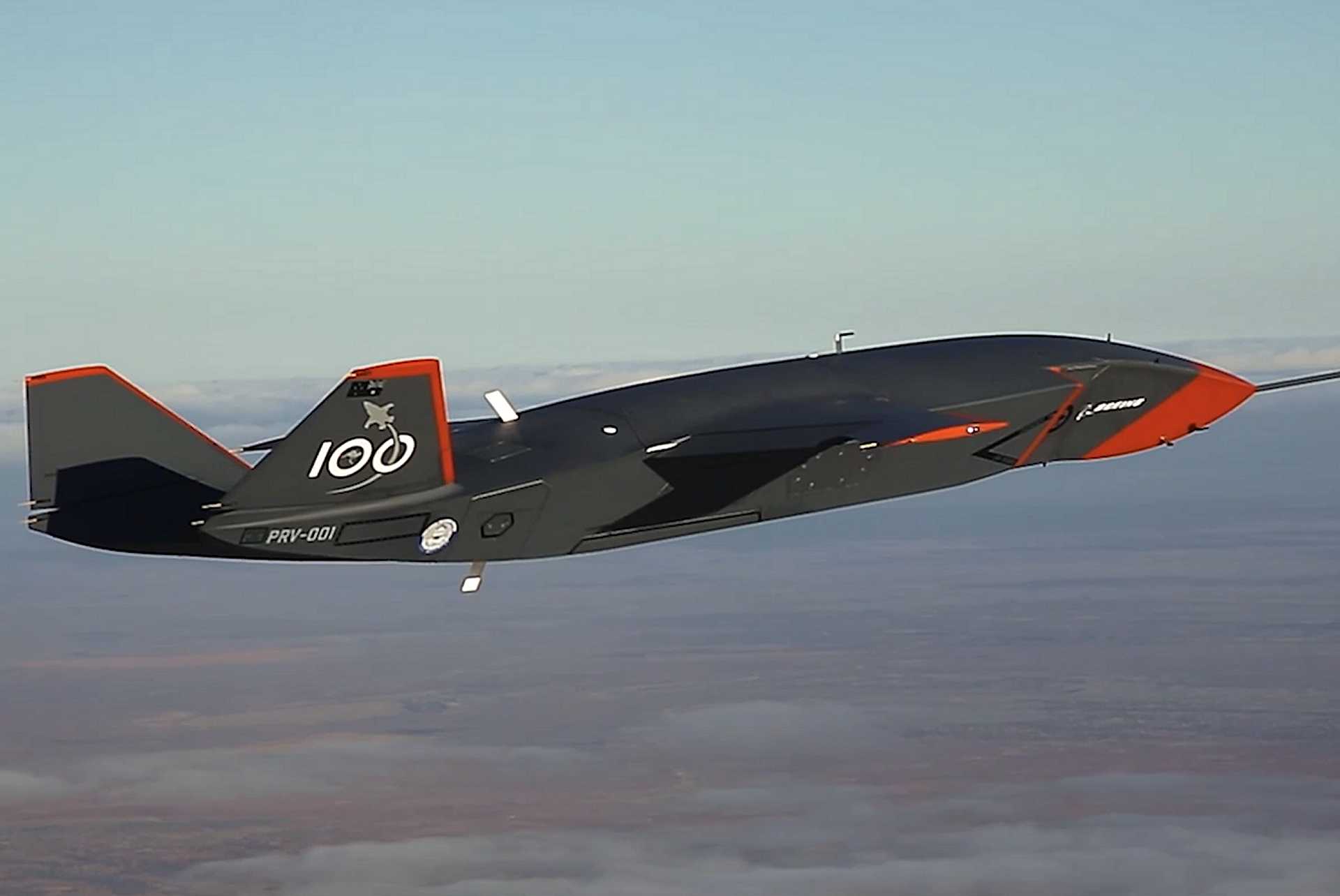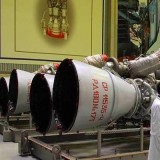Exclusive: US and Australia Co-Develop MQ-28A Ghost Bat Unmanned Combat Aircraft for Next-Gen Air Warfare

{loadposition bannertop}
{loadposition sidebarpub}
The partnership between the United States and Australia in the field of next-generation unmanned aerial systems is reshaping the future of air combat. At the heart of this collaboration lies the MQ-28A Ghost Bat, a stealth-capable, AI-driven (Artificial Intelligence) autonomous drone jointly developed by Boeing Defence Australia and the Australian Department of Defence (DoD), with support from Boeing’s U.S.-based teams. Designed to operate alongside manned fighters as part of a broader force package, the Ghost Bat symbolizes a new model of joint development—where allied nations not only share strategic goals but also co-design and co-produce high-end military capabilities.Follow Army Recognition on Google News at this link
Boeing MQ-28A Ghost Bat in flight during a test mission as part of the joint development program between Boeing Defence Australia and the Australian Department of Defence. The unmanned combat aircraft is designed to operate alongside crewed platforms like the F-35 fighter jet and E-7A Wedgetail airborne early warning and control aircraft. (Picture source: Boeing)
Originally initiated under Australia’s Loyal Wingman program, the MQ-28A has evolved from a national demonstrator into a bi-national combat drone platform with international ambitions. The program integrates industrial, technological, and operational contributions from both countries. Boeing Defence Australia leads local design, manufacturing, and flight testing, while Boeing teams in the United States contribute advanced artificial intelligence, autonomy software, and integration technologies drawn from parallel U.S. Air Force research efforts.
According to Boeing, the MQ-28A flight test programme is expected to conclude by the end of 2025. The final test phase will feature MQ-28 aircraft conducting operationally relevant missions in conjunction with Royal Australian Air Force (RAAF) crewed assets, including the E-7A Wedgetail airborne early warning and control aircraft and the F-35A Joint Strike Fighter. These joint missions are intended to validate the drone’s ability to operate within a real-world battle network, contributing to surveillance, targeting, or strike operations as part of an integrated air combat team.
The Ghost Bat is a modular, long-range unmanned system measuring approximately 11.7 meters in length, with a combat radius exceeding 3,700 kilometers. Its stealth-optimized design, internal payload bay, and open systems architecture allow for rapid mission reconfiguration across intelligence, surveillance, reconnaissance (ISR), electronic warfare, and kinetic operations. Built with manned-unmanned teaming (MUM-T) in mind, the aircraft can function semi-independently or under the command of a pilot in a crewed platform, enhancing survivability and tactical flexibility.
A major boost to the program came with the Australian government’s announcement of an AUD $399 million funding package to advance the development of key Ghost Bat systems. This funding will support further work on sensor and mission payloads, an integrated combat system, and autonomous flight control capabilities. It will also finance the construction of three next-generation Block 2 aircraft, complementing the 10 MQ-28A Block 1 drones already contracted for delivery to the RAAF. This evolution toward Block 2 reflects the program’s transition from technology demonstration to scalable production and operational readiness.
From a broader perspective, the U.S.–Australia collaboration on the Ghost Bat represents a shift in how allied countries approach defense innovation. Rather than duplicating efforts, the two nations are aligning their industrial bases to jointly deliver future-ready combat platforms. Boeing’s integrated teams in Australia and the United States are setting a precedent for co-development cycles that merge rapid prototyping, iterative testing, and doctrinal planning.
The MQ-28A has also attracted attention from the U.S. Department of Defense, which sees the platform as a relevant test case for its own Collaborative Combat Aircraft (CCA) initiative under the Next Generation Air Dominance (NGAD) framework. While the Ghost Bat is tailored to Australian needs, its architecture, teaming interface, and autonomy algorithms offer valuable lessons for U.S. program development. In the long term, this alignment could support interoperability between allied unmanned systems operating in shared theaters, particularly in the Indo-Pacific region.
Strategically, the Ghost Bat programme reinforces Australia’s position as a defense innovation hub and a key contributor to coalition airpower. For the United States, it presents a low-risk, high-impact model for accelerating autonomous combat systems through international cooperation. With flight testing progressing, production ramping up, and operational integration in view, the MQ-28A Ghost Bat is becoming a defining asset in the global shift toward distributed, unmanned air warfare—driven not by one nation alone, but by allied ingenuity.

{loadposition bannertop}
{loadposition sidebarpub}
The partnership between the United States and Australia in the field of next-generation unmanned aerial systems is reshaping the future of air combat. At the heart of this collaboration lies the MQ-28A Ghost Bat, a stealth-capable, AI-driven (Artificial Intelligence) autonomous drone jointly developed by Boeing Defence Australia and the Australian Department of Defence (DoD), with support from Boeing’s U.S.-based teams. Designed to operate alongside manned fighters as part of a broader force package, the Ghost Bat symbolizes a new model of joint development—where allied nations not only share strategic goals but also co-design and co-produce high-end military capabilities.
Follow Army Recognition on Google News at this link
Boeing MQ-28A Ghost Bat in flight during a test mission as part of the joint development program between Boeing Defence Australia and the Australian Department of Defence. The unmanned combat aircraft is designed to operate alongside crewed platforms like the F-35 fighter jet and E-7A Wedgetail airborne early warning and control aircraft. (Picture source: Boeing)
Originally initiated under Australia’s Loyal Wingman program, the MQ-28A has evolved from a national demonstrator into a bi-national combat drone platform with international ambitions. The program integrates industrial, technological, and operational contributions from both countries. Boeing Defence Australia leads local design, manufacturing, and flight testing, while Boeing teams in the United States contribute advanced artificial intelligence, autonomy software, and integration technologies drawn from parallel U.S. Air Force research efforts.
According to Boeing, the MQ-28A flight test programme is expected to conclude by the end of 2025. The final test phase will feature MQ-28 aircraft conducting operationally relevant missions in conjunction with Royal Australian Air Force (RAAF) crewed assets, including the E-7A Wedgetail airborne early warning and control aircraft and the F-35A Joint Strike Fighter. These joint missions are intended to validate the drone’s ability to operate within a real-world battle network, contributing to surveillance, targeting, or strike operations as part of an integrated air combat team.
The Ghost Bat is a modular, long-range unmanned system measuring approximately 11.7 meters in length, with a combat radius exceeding 3,700 kilometers. Its stealth-optimized design, internal payload bay, and open systems architecture allow for rapid mission reconfiguration across intelligence, surveillance, reconnaissance (ISR), electronic warfare, and kinetic operations. Built with manned-unmanned teaming (MUM-T) in mind, the aircraft can function semi-independently or under the command of a pilot in a crewed platform, enhancing survivability and tactical flexibility.
A major boost to the program came with the Australian government’s announcement of an AUD $399 million funding package to advance the development of key Ghost Bat systems. This funding will support further work on sensor and mission payloads, an integrated combat system, and autonomous flight control capabilities. It will also finance the construction of three next-generation Block 2 aircraft, complementing the 10 MQ-28A Block 1 drones already contracted for delivery to the RAAF. This evolution toward Block 2 reflects the program’s transition from technology demonstration to scalable production and operational readiness.
From a broader perspective, the U.S.–Australia collaboration on the Ghost Bat represents a shift in how allied countries approach defense innovation. Rather than duplicating efforts, the two nations are aligning their industrial bases to jointly deliver future-ready combat platforms. Boeing’s integrated teams in Australia and the United States are setting a precedent for co-development cycles that merge rapid prototyping, iterative testing, and doctrinal planning.
The MQ-28A has also attracted attention from the U.S. Department of Defense, which sees the platform as a relevant test case for its own Collaborative Combat Aircraft (CCA) initiative under the Next Generation Air Dominance (NGAD) framework. While the Ghost Bat is tailored to Australian needs, its architecture, teaming interface, and autonomy algorithms offer valuable lessons for U.S. program development. In the long term, this alignment could support interoperability between allied unmanned systems operating in shared theaters, particularly in the Indo-Pacific region.
Strategically, the Ghost Bat programme reinforces Australia’s position as a defense innovation hub and a key contributor to coalition airpower. For the United States, it presents a low-risk, high-impact model for accelerating autonomous combat systems through international cooperation. With flight testing progressing, production ramping up, and operational integration in view, the MQ-28A Ghost Bat is becoming a defining asset in the global shift toward distributed, unmanned air warfare—driven not by one nation alone, but by allied ingenuity.




